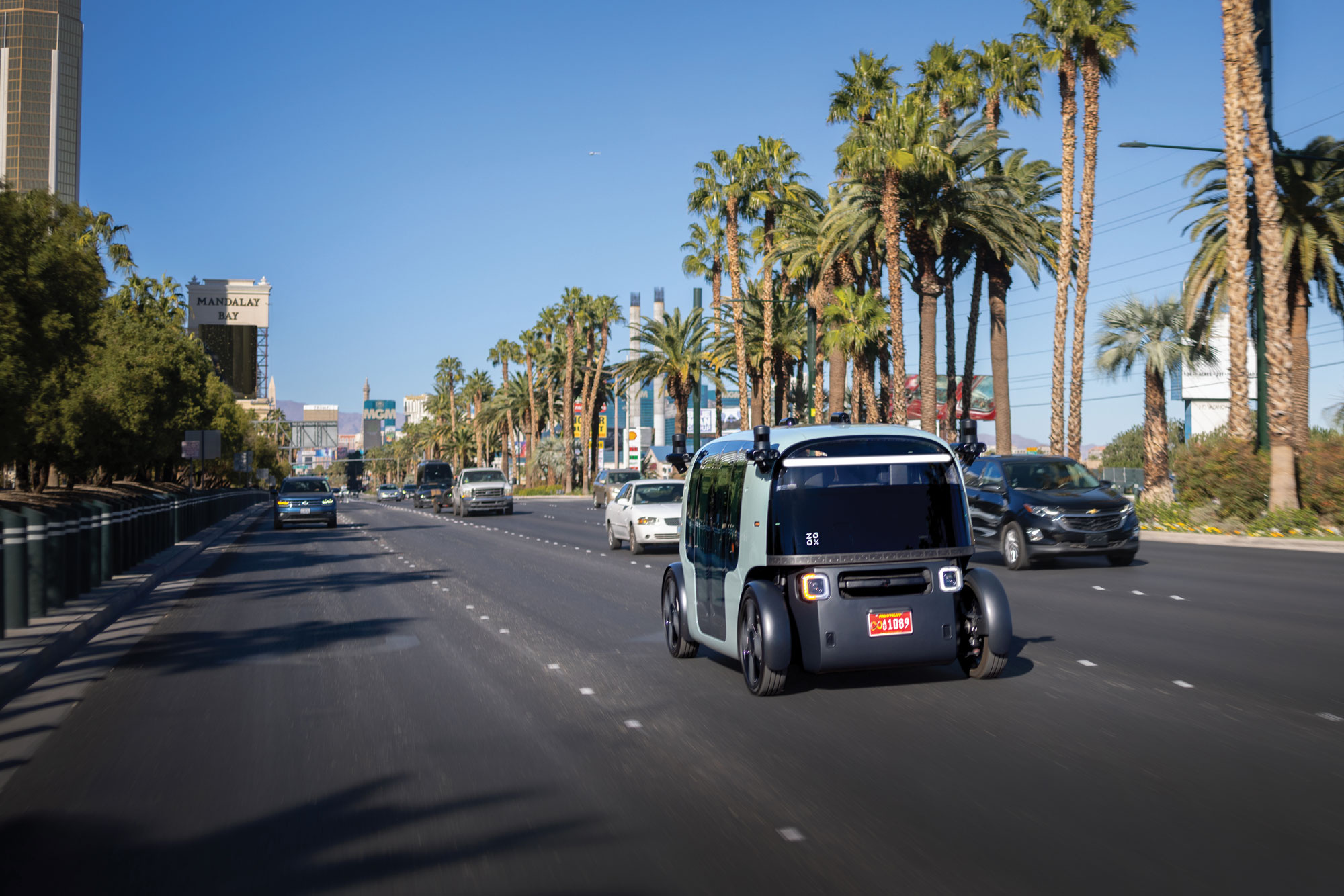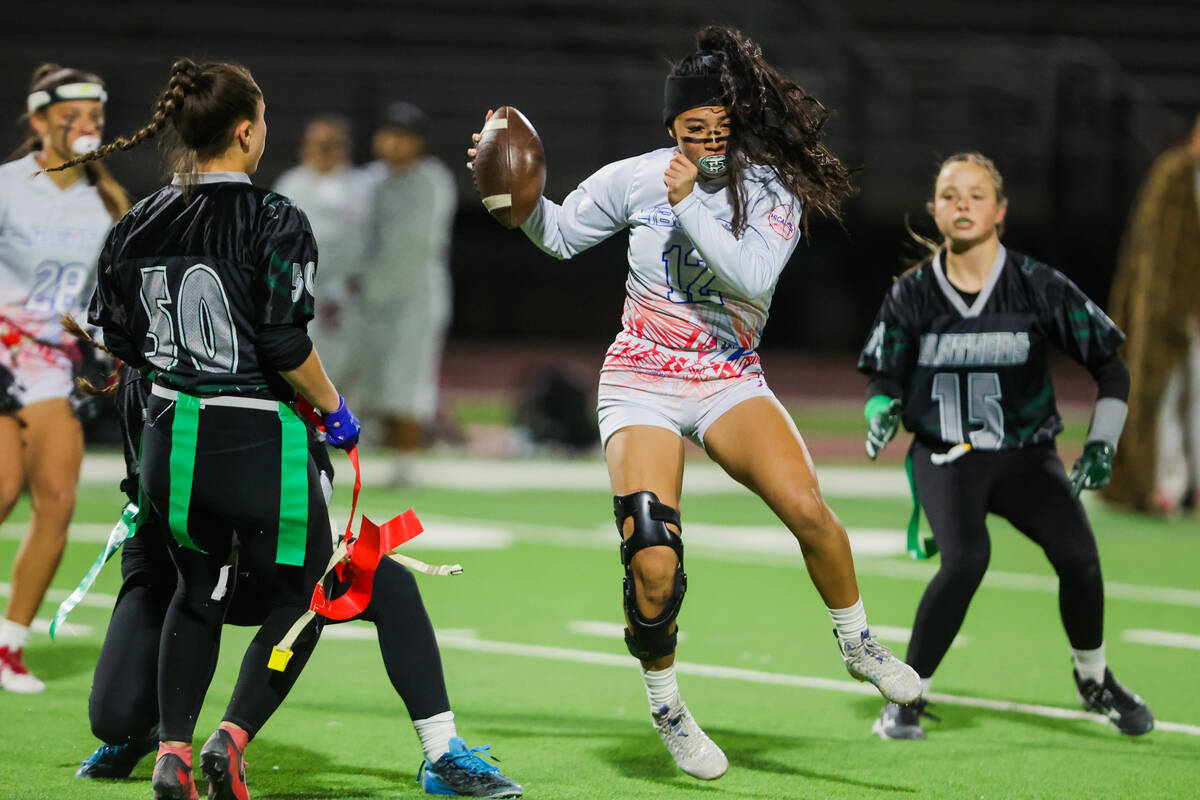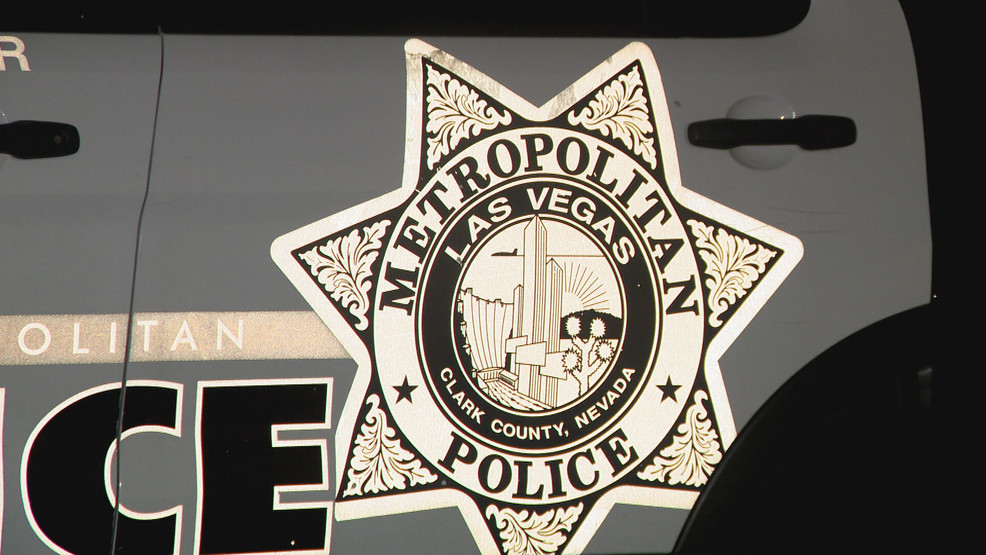As Las Vegas continues to innovate in hospitality and gaming, it is now also becoming a testbed for the “future” of transportation. Zoox, an Amazon subsidiary that’s developing autonomous vehicle (AV) technology, will welcome its first public riders this year in its robotaxis. The company promises the robotaxis will add a new layer of efficient transportation for both residents and tourists.
For more than five years, Zoox has developed its technology to work on city roads, first in the surrounding areas of the company’s headquarters in the southwest valley, then expanding to the Strip. It’s been using retrofitted test fleet vehicles (white SUVs) and test drivers to test the technology and ensure a smooth transition to full autonomous operations.
Now, the company is gearing up to deploy its robotaxi, which forgoes traditional car controls such as a steering wheel or driver’s seat. The custom-built vehicles designed for public use stand out among traffic, with their boxy shape and four inward-facing seats built to comfortably fit all riders. Zoox declined to share how many vehicles it has in its fleet, but the company told the Weekly it has a couple dozen robotaxis across initial locations, which include Las Vegas, San Francisco and Foster City, California.
But with the introduction of AVs, a range of questions arise. Will they replace existing rideshare services? How will these cars navigate the dynamic roadways of Vegas? And what happens if something goes wrong?
Is it safe?
Zoox technology prioritizes safety, says Justin Windus, Zoox’s director of fleet operations.
“Each individual [company] has their own proprietary sensor architecture, its own proprietary software. Zoox has taken an approach to create a tapestry of LiDAR [Light Detection and Ranging], radar thermal imaging and then overlay that with cameras and create different quadrants of sensors on the vehicles,” he says.
This “tapestry of sensors” ensures that the vehicle has 360-degree visibility, equipping it to handle dynamic driving conditions.
The safety system also includes a patented horseshoe airbag design and bi-directional capabilities, meaning that every seat in the robotaxi is equally safe regardless of the position.
“The seatbelts pre-tension and puts you in an upright position so if the airbag does need to deploy, you’re in the optimal position,” Windus says.
Per Nevada law, AV companies must maintain $5 million insurance coverage for each vehicle.
Is it an app?
You might have seen AVs roaming around, but what does it take to actually use one? Zoox is taking a phased approach to introducing its AVs, starting with an early rider program open to the public. These riders will have the opportunity to ride for free, providing feedback ahead of the paid service launch expected later this year.
The company’s ultimate goal is to shift to an app-based system. But Windus claims AVs won’t replace traditional rideshare services.
“Our goal is to provide another option for those getting around Las Vegas. We’re not looking to replace rideshares or public transportation,” he says.
Will AVs impact the gig economy?
The rise of autonomous vehicles is sure to disrupt several industries. How will it impact gig workers?
Erin Breen, Director of UNLV’s Road Equity Alliance Project, suggests that while AVs could potentially reduce the need for rideshare drivers, the shift won’t happen overnight.
“I grew up in Las Vegas and it changes. The biggest change ever in the tourism industry was Uber and Lyft coming on the market and basically replacing taxi cabs. I don’t see that happening with autonomous vehicles,” she says.
On the other hand, Breen points to certain features of AVs that are likely to put them in competition with rideshare companies.
“I know that they’re going to be less expensive … I look at autonomous vehicles first and foremost for what it can do for impaired driving … I think that it’s totally the way of the future.”
Breen also highlights that AVs could offer a valuable service for specific demographics, like seniors who may benefit from robotaxi options.
“I think that once the senior population catches on to the fact that they could call up a car, it would come to them and they wouldn’t have to park the car … for an older driver who may not belong on the road anymore, it’s going to be a game changer,” she says.
What happens if the tech fails?
A major concern regarding AVs is what happens if something goes off track?
Windus says Zoox’s AVs have a safety feature in case sensors go down.
“There’s a 270-degree redundant feature on there, so if one sensor stack goes down, there’s always another area that will be able to pick up and take over if needed.”
Adhering to Nevada law, Zoox also keeps a human in the loop for times where the vehicle encounters an unfamiliar hazard.
“If the vehicle comes into an interaction where, say, there’s a situation that it hasn’t seen before, a human will be able to queue in and provide guidance to the vehicle and create a breadcrumb trail to be able to guide the vehicle in a different direction,” Windus says.
The vehicle will always drive itself, regardless of the human assistance through the software, he says.
Asked how the company will safeguard against cyberattacks that might interfere with software, Zoox provided the following statement: “Our vehicles have localized compute and data processing, which means that all of the vehicle’s decision-making happens locally within the vehicle.”
Click HERE to subscribe for free to the Weekly Fix, the digital edition of Las Vegas Weekly! Stay up to date with the latest on Las Vegas concerts, shows, restaurants, bars and more, sent directly to your inbox!


